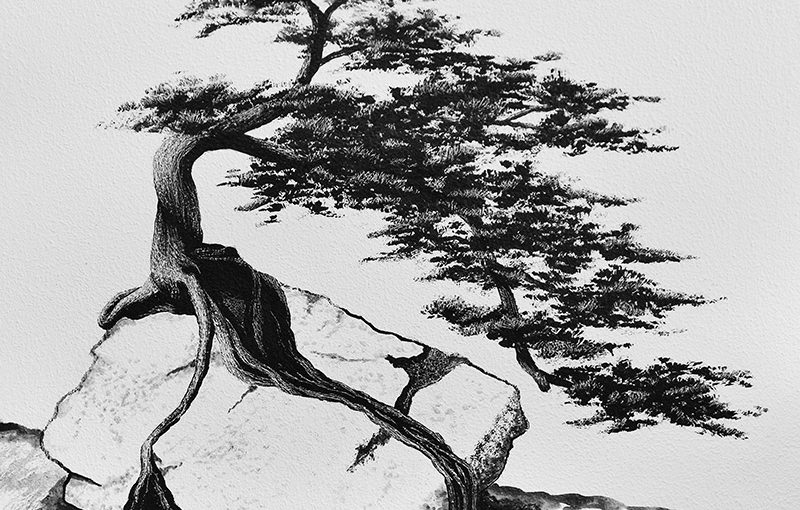Author: Julie Graf Frye
I part the out-thrusting branches
and come in beneath
the blessed and the blessing trees.
Though I am silent
there is singing around me.
Though I am dark
there is vision around me.
Though I am heavy
there is flight around me.
The poem ‘Woods’ by Wendell Berry
Have you ever stopped along a trail and marveled at a tree that is seemingly growing out of a rock, with little or no soil to be seen?
Have you shared in the awe of “flag trees,” some of which are easily visible from Trail Ridge Road, and wondered how these one-sided trees survive the winter winds and depth of snow at ~10,000 feet elevation?
Or have you enjoyed standing in a golden grove of Aspen in the fall, and experienced the “quaking” of the clone’s leaves? The quivering of their leaves is due to the long, flattened leaf stalks (petioles) which may have evolved to help Aspen leaves avoid being stripped by mountain winds.
It is awe-inspiring to me how different species of trees have adapted to amazingly varied environments across the world. The arid lands of Oman, Yemen and the mountainous region of northern Somalia are home to a group of closely related species of Boswellia, which can gain a foothold and cling to rocks on steep slopes with a cushion-like swelling at the base of its trunk. If the tree is wounded, specialized ducts exude a mixture of resin and water-soluble gums to discourage attack from termites and other insects. It is this substance, which releases a unique, balsamic fragrance when heated over glowing charcoal, that has been scraped from trees for at least five millennia and is known as frankincense. And contrary to popular lore, myrrh is neither a tuna casserole nor “hot dish.” Rather, myrrh is another tree resin that, along with frankincense, was considered extremely valuable in the Mediterranean Incense Trade Routes. When frankincense was presented as a gift to Jesus it was worth more than gold; according to some authorities, it was the most valuable substance on Earth.
Given their origin from a wound, resins have often been referred to as the “tears” of a tree. I like to think of these “tears” in terms of their healing properties, recognizing them metaphorically as something that we as humans have in common with trees. Tears are valuable. Tears help heal our wounds. Tears help soothe our grief. Lord knows that many tears have been shed this past year.
Roots are a structure that all trees have in common, and many stands of trees (e.g., Aspen) share a network, or community, of roots. In these days among our human species, it seems that there is much searching for community. How is our faith community at First Congregational different from other forms of community? I think the key differentiating characteristic is Love. Love with a capital “L,” because as one of the very first Sunday School lessons I learned, and that I know our kids learned from Day 1 at First Congregational (from their baptism to Ginger’s nursery, through youth group, confirmation, knitted graduation blankets and beyond) is this:
“God is Love, and you are loved.”
Being rooted together in God’s love, we cannot help but grow.
Prayer: Lord, be with us as our tears flow and heal. Let us feel our roots each day, growing as a community and in the light of your Love. Let us nurture our roots as You nurture us. Amen.

